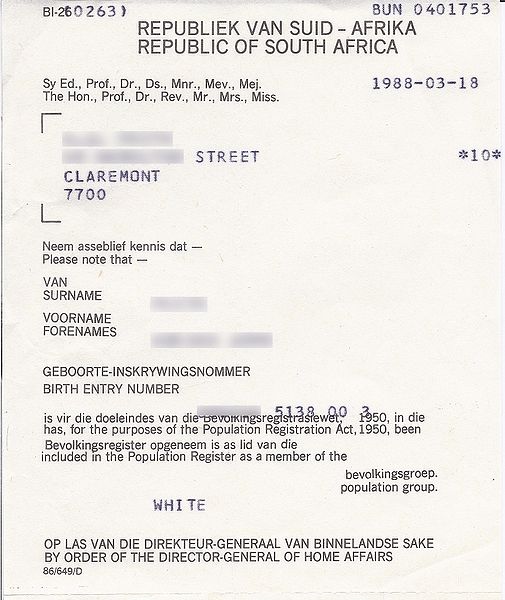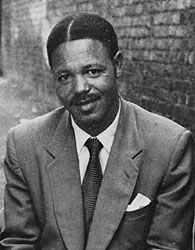All African people were united by the African National Congress (ANC). Nelson Mandela and Vuhisile Mini are two of the main leaders from ANC. Their primary forms of resistance and protests were non-violence marches, and they would sing their freedom songs during these events. They sang when they were marching, they sang at funerals of their comrades. Freedom songs in South Africa functioned like those from the United States during the Civil Rights Movement, but those African songs were often combined with dancing.
Vuhisile Mini
Nkosi Sikelel' iAfrika, the alternative national anthem of South Africa today, was one of the freedom songs. It was composed as a church hymn, but later it was sung during the resistance movements against the apartheid government, as it was the official anthem for the ANC during the apartheid era. When it were sung during the anti-apartheid movement, this hymn was a threatening prayer, which represented the suffering of the oppressed Africans. Teachers taught this song to their students at school, and mother taught their children at home. It went beyond a song. Teachers and parents used this song to teach the children who they were. It's all about their identity as native Africans.
Toyi-toyi was a dance from Zimbabwe. In the anti-apartheid movement, this dance was usually performed when people were marching, especially after the Soweto Uprising, a student demonstration, in which over 700 students were killed by police. The anit-apartheid movement then became more militant, and Toyi-toyi, as a militant dance was danced by Africans in their massive street demonstrations. This dance was a unique way for them to fight against the apartheid government. When Toyi-toyi was performed in the massive street demonstrations, the police did not dare to shoot them, and even tear gas did not stop them. This such a powerful dance that it wiped Africans' fear.



